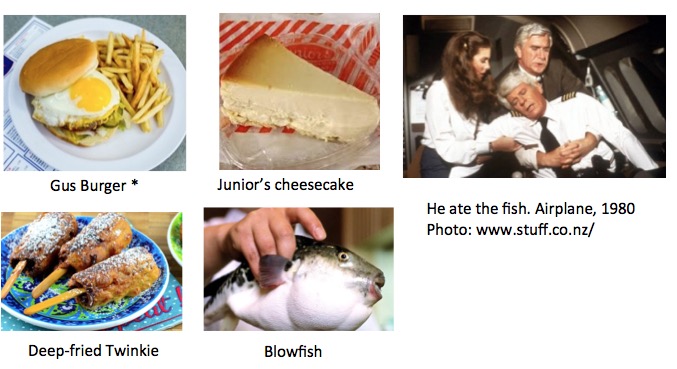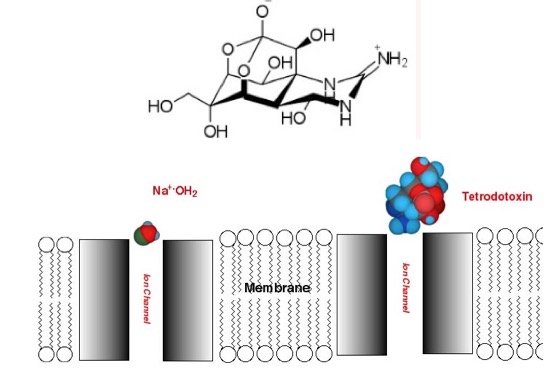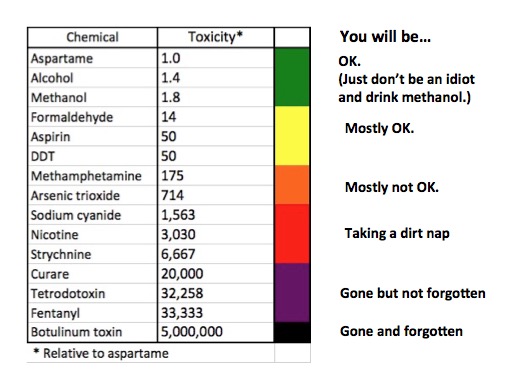For those of you who have deluded yourselves into believing that you can eat a natural, "chemical-free" diet and live to be 2 million years old, I hate to burst your bubble. But, as we at the American Council have said time and time again, there is no such thing as life without chemicals, nor is there an innate difference in toxicity (or any other property) between naturally occurring chemicals and those that were made in a lab. Chemicals in either group can be safe or deadly; this depends solely upon the chemical structure of any given molecule. Your body cannot tell whether a chemical it "encounters" came from an organic farm in Vermont or a refinery next to the New Jersey Turnpike. (See: Vitamin C Conundrum For The Organic Crowd).
There is certainly a good example of natural not equaling safe in Japan right now. They are dealing with ass-kicking marine neurotoxin that you want no part of. Before we take a look, let's take a little (and meaningless) food quiz: Which of the following food is the riskiest to your health?

* If you're wondering what a Gus Burger is, see: "The Gus Burger As A Proxy Of Wobbly 'Food Science'"
Of course, the answer is the blowfish, something that people in Gamagori, a small city in southern Japan are rather concerned about. Although no one has been harmed, the discovery of five packages of fugu - Japanese for blowfish - that did not have its livers removed before packaging. The city is taking this matter seriously enough to have emergency loudspeakers, which are normally used for earthquakes, broadcasting fugu warnings.

A package of fugu. Photo: Aichi Prefectural Government's Department of Health and Public Welfare
Although the meat of blowfish (aka pufferfish) is considered to be a delicacy, whoever prepares it (1) better be quite careful to remove the liver, which contains an extraordinarily toxic chemical called tetrodotoxin. Tetrodotoxin disrupts the normal function of the nervous system by blocking sodium ions from crossing cell membranes, causing paralysis. The passage of sodium ions through the channels is one type of molecular switch which tells nerves when to fire (Figure 1).

Figure 1. Top: The chemical structure of tetrodotoxin. Image: Heliobio.com Bottom: The depiction of a normal sodium ion channel (left) and one that is blocked by a tetrodotoxin molecule (right) Image: University of Maryland
Tetrodotoxin is far from the only chemical that causes paralysis. They are numerous chemicals, both natural and synthetic, that do so. Table 1 lists five well-known paralytics and their properties.

Table 1. Selected paralytic neurotoxins. The lower the LD50, the more potent the toxin.
It just so happens that of the five neurotoxins I have selected, the most toxic three chemicals come from natural sources, which is not unusual. When it comes to "pee-your-pants scary." neurotoxins, Mother Nature makes some bad boys which common synthetic poisons seem like white bread.
Table 2 (below) contains a random group of well-known chemicals, both naturally occurring and synthetic. The toxicity (LD50), either in rats or mice, was determined by administration of a single oral dose of the chemical. The safest chemical I chose (and one of the safest anyone could choose) was (aspartame, LD50 = 10,000 mg/kg) and assigned a value of 1.0. The other chemicals were ranked by comparison to aspartame. (2)

Table 2. Well-known chemicals and their respective toxicities.
It becomes immediately obvious that there is a huge range of toxicity throughout the chemical world. Although there are some awful man-made poisons, like VX gas or fentanyl, Mother Nature wins this contest hands down. Botulinum toxin is 32,000-times more toxic than sodium cyanide and 100,000-times more so than DDT. Although this list is by no means comprehensive, it points out that Mother Nature is not always your friend.
Perhaps the next time you're in a restaurant, order a Diet Coke and get a withering look from a woman who has just had the most toxic substance on earth injected into her forehead, go ahead and smirk a little. It's OK. Doesn't make you a bad person. Just a fish out of water.
NOTES:
(1) Fugu preparers are trained and licensed. This process takes 7-10 (!) years.
(2) Rodent toxicity is usually a decent approximation of human toxicity.




